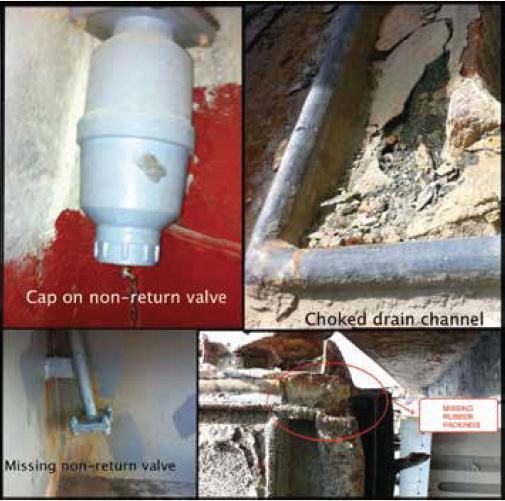201352 Weather tightness of hatch covers
Even on new ships hatch covers are only truly weather tight in the static condition; weather tightness can’t be guaranteed in dynamic conditions such as at sea and especially in rough weather. When water does enter the hatch cover, by design it goes into the drain channel, through a non-return valve, and then passes on to the deck. The nonreturn valve ensures water can only go from the drain channel to the deck and not vice versa.
Unfortunately, inspections have revealed missing, blocked or otherwise plugged non-return valves and drain channels. Some nonreturn valves have even been found capped. These conditions mean that water which enters the hatch cover is not able to pass out from the hatch cover drain channel and instead goes into the hold, resulting in cargo damage.
Inspections have also revealed hatch cover rubber packing that is missing or damaged. Where repairs have been effected, they sometimes appear to have been made too localised to the damage (six to twelve inches, whereas manufacturer’s instructions normally require a minimum of twenty four inches to be changed.) The ends of the repair packing should be cut at a 45 degree angle, not vertically, and the packing should be hammered from the centre towards the sides.
Another deficiency noticed during inspections is with the rubber washers of cleats. Often, these washers are either too hard (due to age) or covered by thick layer of paint which makes the rubber washer ineffective.

